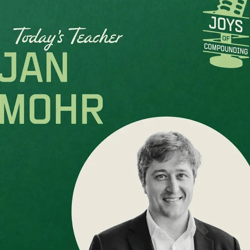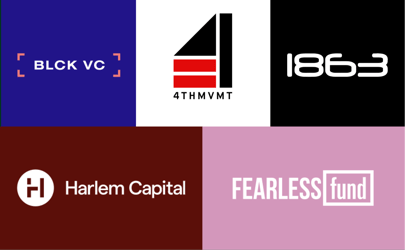Buy one company. Then another. Stitch them together under a shared philosophy. Scale faster, smarter, better…. Let the good times roll.
The concept is intoxicating. Build a platform.
But as anyone who’s actually built one will tell you, “platform” is one of the most overused words (giving “synergy” a run for its money!) and least understood terms in modern business. The difference between a true platform and just a collection of random businesses comes down to the discipline it takes to build something that compounds long after the founders step away.
Few people get that distinction better than Rick Buhrman and Paul Buser, co-founders and co-CEOs of Sator Grove Holdings. I sat down with them recently to unpack how they think about platform building not as a series of transactions, but as a decades-long craft.
Which brings us to the first, most critical question for any founder…
How should you approach your first acquisition?
Nail it, and you set the stage for compounding growth.
Botch it, and you still build a foundation…just one that compounds challenges and stresses instead of value.
Here’s how Rick and Paul think about the first acquisition:
- Start with clarity. Define upfront how you’ll handle culture, integration, and incentives.
- Decentralize early. Give new companies room to operate independently, as this attracts entrepreneurial talent, fosters experimentation, and avoids stifling growth.
- Create learning loops. Even if businesses remain autonomous, the platform must capture and share best practices… especially now, with AI accelerating operational insights.
- Align incentives. Structure rewards so that company-level success (like free cash flow) feeds into platform-level value creation. This only works if everyone’s rowing in the same direction.
The early mistakes that trip founders up
On the flipside, the first few acquisitions is also where many platforms stumble. According to Paul and Rick, two mistakes stand out above all:
- Lacking deal discipline. There’s a seductive but dangerous trap in dealmaking. It’s the urge to “just get the first one done.” Overpaying for a marginal business or underpaying for one with real potential both backfire. Either extreme drains time, energy, and focus.
- Not betting on your early hires. The first team sets the DNA for everything that follows. Settling here is a misstep (one I see time and time again) so be willing to “level up” talent as you learn what the platform really needs.
In my opinion the first few acquisitions should feel surgical, but not in the sense that it’s 100% perfect. More than that it’s deliberate. Measured. Careful. Building a platform’s all about making the right acquisitions, with the right people, in the right way so you can scale without breaking.
Capital structure: more than just money
Which brings us to the next piece of the puzzle: capital structure. As Paul put it, “Capital structure isn’t just financial, it’s all about behavioral design. It’s cultural architecture. The investor base and incentive design shape everything.”
AKA…
You have to get the shareholders right.
You need the people who understand long-duration compounding. Even with plenty of cash, a short-sighted investor base can force decisions that destroy value. The mindset of backers filters all the way down.
Long-term thinkers = Risk-tolerant and encourage bold bets on talent, integration, and learning loops. Short-sighted = Breed hesitation, friction, and compromises that chip away at compounding value.
Align around multiple-of-capital thresholds.
Platforms that tie success to multiples of invested capital, rather than short-term metrics, make smarter, cleaner decisions. They avoid the trap of pushing for quarterly returns and instead focus on durable value creation. Over time, this builds a culture of capital stewardship.
Let’s talk blindspots
But here’s the thing about founders. They’re wired for motion. For growth. For pushing harder and faster. But that same bias to move can sometimes create a massive blindspot: how you think about debt vs. equity.
Here’s something most founders miss…
- Prudent debt can be your friend… if you know how to use it.
When you have recurring, predictable revenue, debt can actually become what Rick and Paul call a “discipline engine”. Debt, done right, forces focus. It sharpens execution. It weeds out the fluff. (But this of course only works if the underlying companies are high quality and resilient.)
- Founders also overlook how long it takes to build platform-level lending relationships. These don’t magically appear the day you decide to scale. You need a different kind of runway. We’re talking a real history of credibility, track record, and trust. A piece of advice from Paul and Rick…
“Start those conversations years before you need them.”
But what if you wanna go fast?! When should a platform focus on velocity?
You don’t.
At least not right away.
As Mitch Rales says, “You fire some bullets first… then bring out the cannon.”
Put another way: Slow is smooth, and smooth is fast. Yes that was a Mark Wahlberg quote from “Shooter”...
Our friends at Sator Grove tells us, “Early on, real velocity comes from learning, running small, thoughtful experiments, and refining your M&A and operating systems. Once those loops are working and the platform’s brand attracts talent and deal flow, that’s when scale accelerates naturally.”
So don’t rush the first few deals. Those first few set your tone, your reputation, and your playbook for everything that follows.
Like Paul and Rick say, “Compounding takes decades, not years. So you probably shouldn’t start a platform if you’re not willing to think in decades.”
Hold up…This is a “decades-long” game?!?
Decades-long. Two words that can make even the most patient builder’s eye twitch. But if you’re building a platform, that’s the game.
You can’t tiptoe in. You have to cannonball.
The commitment is part of it.
The commitment is it.
And if that level of endurance scares you, here are a few more reality checks worth noting:
- You need muscles for both operating and M&A capability.
- You need a founder’s mentality. A bias for ownership, not management.
- You need a big enough opportunity set and enough room for iteration and scale.
It’s complex stuff. It’s messy. It’s a marathon full of false starts, hard pivots, and long feedback loops. So why in the world would anyone willingly take that on? Why trade quick wins for a slow climb? Put plainly…
Why start a platform at all?
Because that’s where the real value lives.
A great platform doesn’t just buy companies but compounds value across three flywheels:
- Talent
- Ideas
- Capital
As Rick and Paul put it: “The goal isn’t just to own great companies, but to build a living ecosystem that gets stronger with every addition. When done right, a platform becomes a living organism.”
It’s not for the faint of heart, but for those who are willing to play the long game, the rewards come in spades. For the ones who can stomach the grind and think in decades, the value compounds in ways most people can’t even model.
The best platforms aren’t built to just buy buy buy. They’re built to compound. And that’s the funny little thing about compounding. It always takes a little while… ;)
The DNA of all great platform builders
Ask a hundred builders, and you’ll get a hundred answers. Answers will be conflicting, sometimes outright contradictory.
Rick and Paul? They don’t shy away from the contradiction. They lean into it. Their perspective is built on the opposition itself:
The best platform builders are walking paradoxes.
They blend strategic patience with relentless urgency.
They know when to slow down and let the system breathe and when to push hard, every single day. They’re patient with outcomes but ruthless about inputs.
That tension — patient compounding paired with daily urgency — is the paradox that defines every great platform leader.
If there’s one thing I’ve learned from conversations like this, it’s that the best leaders are steadfast, patient, disciplined, and dogged in their pursuit of growth. Yes it might be slow but it’s 1% better every day. Compounding growth is gonna take time.
Isn’t that what makes it so worth it?
Dive Deeper: Joys of Compounding podcast
Want more insights from Paul and Rick? Check out the latest episode of their podcast, Joys of Compounding, featuring Jan Mohr, CEO of CHAPTERS Group AG.
What you can expect:
Over the past five years, CHAPTERS has launched four acquisition platforms, snapped up around 60 operating companies, and seen its stock soar nearly 10X. They unpack the journey, the lessons learned, and how AI is reshaping the business landscape. A must-listen for anyone interested in learning how leaders scale. Tune in here.
Sign up for my newsletter, Talent Market Fit to get my latest thoughts on the market






